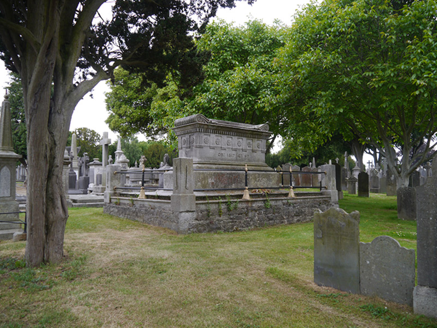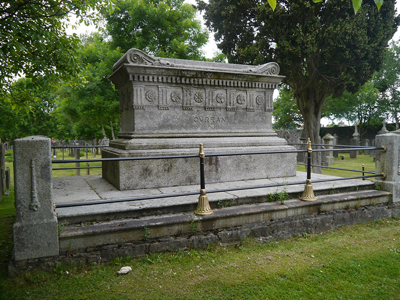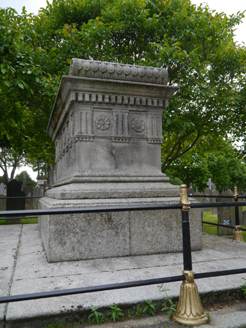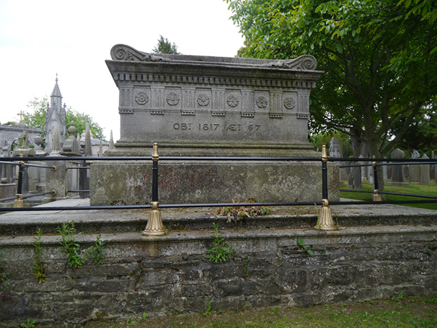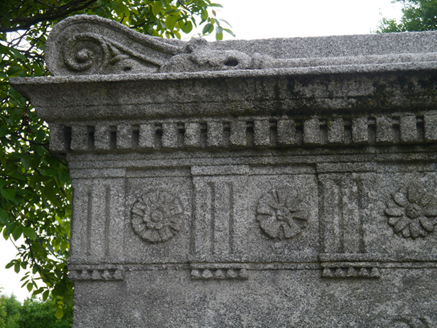Survey Data
Reg No
50130099
Rating
Regional
Categories of Special Interest
Architectural, Artistic, Social
Original Use
Grave monument
In Use As
Grave monument
Date
1830 - 1840
Coordinates
315040, 236923
Date Recorded
12/06/2018
Date Updated
--/--/--
Description
Freestanding granite funerary monument and enclosure erected c. 1835. Doric sarcophagus having dentilled cornice, triglyphs and rosettes, moulded plinth, lid having scalloped scrolls to east and west ends; inscription 'Curran' to south elevation; inscription 'OBT 1817 AEI 67' to north elevation. Rectangular stepped bullnosed granite platform on rubble limestone base; square-plan corner piers with decorative tassels, and wrought-iron railings having decorative cast-iron piers to centre. Located at east side of Glasnevin Cemetery.
Appraisal
A granite neo-Classical funerary monument of striking simplicity and high craft value, in the form of a sarcophagus and modelled on the tomb of Scipio Barbatus at Rome. It was executed to designs of 1834 by John Papworth (1809-41), who was the son of Dublin architect George Papworth, but who died young at the age of 32 before his career could become fully established. The monument was commissioned in memory of Irish lawyer and statesman John Philpot Curran (1750-1817) who, although himself a member of the Established Church, had championed the cause of Catholic Emancipation, undertaking the defence in the treason trials of the rebel leaders of the Society of the United Irishmen, Wolfe Tone, Archibald Hamilton Rowan and Lord Edward Fitzgerald. Originally known as Prospect Cemetery, the burial ground was opened in 1832 following a successful campaign by Daniel O'Connell to establish as a civic, non-denominational cemetery. It holds the graves and memorials of over one million people, including many notable citizens, of whom Curran was the first. Curran had died in London in 1817 and although it had been his dying wish to be buried in Ireland, his remains were interred at Paddington Church in London. In 1834 the Cemetery Committee passed a motion to approach the Curran family to seek permission to have his remains disinterred and relocated to Dublin, representing an opportunity for the Committee to encourage high-status burials and setting a precedent for the organization of plots according to status and social standing, at a higher cost. Permission was granted, although due to family objections surrounding the Committee's wish to hold a ceremonial public funeral procession, the reinternment did not take place until three years later, by torchlight, on a February evening in 1837. The area, which lay between the original entrance and the former mortuary chapel (now demolished) subsequently became known as Curran's Square, and plots were sold at a premium, at the same rate as the O'Connell Circle. The monument makes a strong contribution to the historical and architectural interest of the cemetery.
